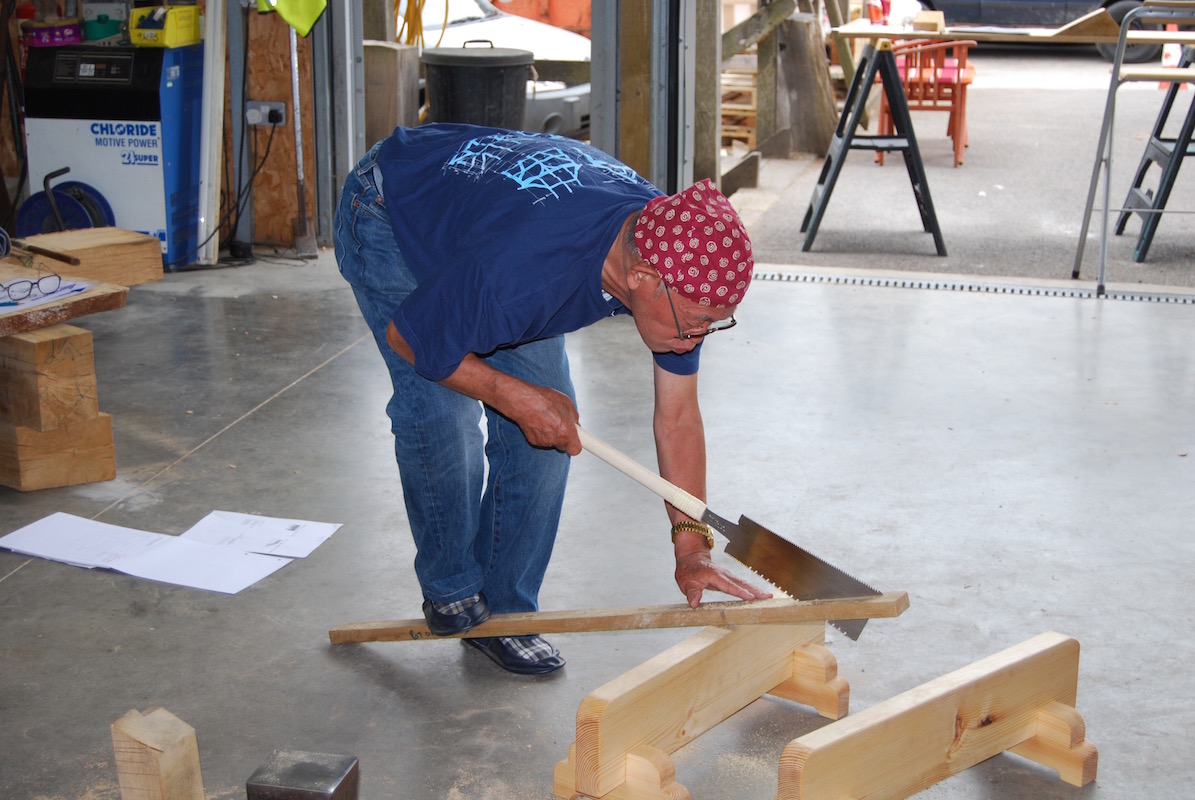Just my opinion, but I think you'll find the situation unrewarding even with practice. But I may be out of touch as I've got a gaggle of rip saws (perhaps 5) that are set up for hardwoods and softwoods with tooth count, rake and set. The issue with japanese saws is that instead of modifying your own (with most), you buy a configuration - you have no recourse them for making it work.
I think what I didn't get very clear above (not for your benefit, but others) is the flexibility of the plates on the japanese saws means that when you correct for a direction in one plane, the flexibility makes for a consequence in another that you're not anticipating.
When I first switched over to hand work, I'd often get off course on a long rip and usually not twice, so the remedy was to flip the board before things got bad and come back the other way. But as you, I never put the time in with the japanese saws to do the critical thing that we all naturally do with western saws on a long rip - make constant and small corrections - because we learn the sense to know when we need to do that. The stiffness of the western plates makes it so that there aren't too many unintended consequences.
A saw that requires lots of wander is a dud in the context of hand working, too - even for people who don't do much hand woodworking. Often, strange shaped or sized pieces allow for extra parts if you can hit a small variance.
https://i.imgur.com/RzFOQiB.jpg
https://i.imgur.com/EORH1YU.jpg
In the case of the above (which is a typical actual use), I want a neck and a fingerboard out of a blank. The blank is as thick as it could be after I planed out bow - there is 1/16th of an inch of wiggle room more or less. With a good bandsaw and care, that's easy to hit (that's a 16th in excess of the kerf - fortunately).
A good quartered fingerboard is about $30, so this use saves $30. Wandering into the fingerboard side is just the loss of the fingerboard. Wandering into the neck side would be a loss of about $80.
I think what I didn't get very clear above (not for your benefit, but others) is the flexibility of the plates on the japanese saws means that when you correct for a direction in one plane, the flexibility makes for a consequence in another that you're not anticipating.
When I first switched over to hand work, I'd often get off course on a long rip and usually not twice, so the remedy was to flip the board before things got bad and come back the other way. But as you, I never put the time in with the japanese saws to do the critical thing that we all naturally do with western saws on a long rip - make constant and small corrections - because we learn the sense to know when we need to do that. The stiffness of the western plates makes it so that there aren't too many unintended consequences.
A saw that requires lots of wander is a dud in the context of hand working, too - even for people who don't do much hand woodworking. Often, strange shaped or sized pieces allow for extra parts if you can hit a small variance.
https://i.imgur.com/RzFOQiB.jpg
https://i.imgur.com/EORH1YU.jpg
In the case of the above (which is a typical actual use), I want a neck and a fingerboard out of a blank. The blank is as thick as it could be after I planed out bow - there is 1/16th of an inch of wiggle room more or less. With a good bandsaw and care, that's easy to hit (that's a 16th in excess of the kerf - fortunately).
A good quartered fingerboard is about $30, so this use saves $30. Wandering into the fingerboard side is just the loss of the fingerboard. Wandering into the neck side would be a loss of about $80.





































